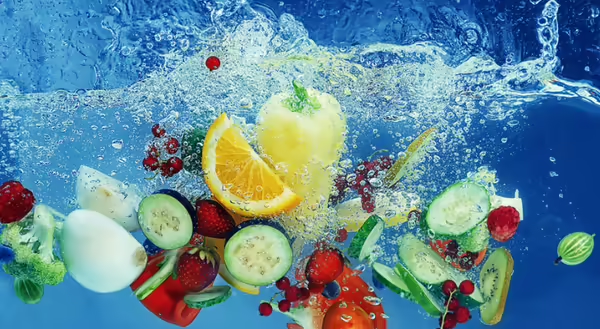
Staying hydrated is a concern all year round, but especially in the summer when it is hot outside. The National Library of Medicine cites 75% of Americans as chronically dehydrated. Water makes up 60% of the body and provides the body energy, prevents kidney stones and urinary tract infections, prevents constipation, improves skin, and can help you feel full.
Symptoms of Dehydration:
Signs of dehydration can often be missed and include symptoms aside from thirst and dry mouth. Symptoms of dehydration can include:
- Headache
- Fever
- Confusion
- Tiredness
- Constipation
- Increased pulse
- Faster breathing
- Muscle cramps
- Dizziness
- Weakness
The most common symptoms for children are severe diarrhea and vomiting.
How much water do I need?
Do you need eight glasses of water per day? This is a highly debated recommendation as studies have shown fluid intake varies from person to person, and factors such as how active you are and where you live can affect how much fluid the body needs. Although there are no general recommendations for how much plain water you should drink daily, the Institute of Medicine provides guidelines for total beverage intake, not including fluids from food. Men over the age of 18 should have 13 cups, and women should aim for 9 cups per day of fluids.
An estimated 20% of our fluid intake comes from the food we eat.
Fruits and vegetables are high in water and a great way to stay hydrated, especially during summer!
- Fruits and vegetables with at least 95% water content include cucumbers, iceberg lettuce, celery, radishes, and romaine lettuce.
- Tomatoes, summer squash, asparagus, bell peppers, cabbage, cauliflower, mushrooms, spinach, strawberries, and watermelon all have 92 to 94% water.
Fluids include water, milk, 100% juice, coffee, and tea. Remember, if you spend more time being physically active or in a hot environment, you will need to drink even more water to lose sweat. The American College of Sports Medicine (ASCM) recommends adding 16-20 ounces of water or sports drink at least four hours before physical activity. ACSM also recommends adding ½ to one cup of water for every 15 to 20 minutes when exercising less than an hour. Check out How to Calculate How Much Water You Should Drink from the University of Missouri System.
The easiest way to check for hydration status in looking at your urine color. Straw or lemonade-colored urine is a sign of good hydration, while urine that is the color of apple juice or dark in color indicates dehydration.
Tips for drinking more water
- Add drinking water to the morning routine. Before reaching for that cup of coffee in the morning, start the day with a glass of water or try drinking a glass of water before a meal.
- Hunger and thirst can often be confused. Instead of reaching for that bag of chips, have a glass of water first. Choose water before opting for soda pop, alcohol, or energy drinks.
- Add flavor. Infuse your glass of water with fresh fruit such as berries, lemons, or cucumbers. Beverage powder drop-ins can also be a great option but watch out for high amounts of added sugar. Always read the nutrition facts label.
- Lastly, invest in a sturdy water bottle and keep it within eyeshot to remind yourself to keep drinking. Water bottles can harbor bacteria. Consider washing them with hot, soapy water once a day and completely drying them before refilling. According to the University of Idaho, water bottles should be sanitized once a week. Mix ½ teaspoons 8.25% bleach with 4 cups of water and soak the bottle for two minutes. Rinse and let air dry.
Have a safe and healthy rest of the summer, and feel free to contact the Extension office for beverage recipes or more information on staying hydrated.
About the Author: Lisa Peterson is an Illinois Extension Nutrition and Wellness Educator serving Christian, Jersey, Macoupin, and Montgomery counties in west central Illinois. Her interests include using social media marketing and technology to translate research-based information in food safety, optimal nutrition, preparing and safely preserving food, preventing and delaying chronic disease through diet management, and developing innovative methods for implementing wellness in the workplace. She has a passion for translating science-based research for consumers to use locally. She dedicates her work to improving the lives of the citizens of Illinois by providing them with the tools to make safe, healthy, and informed decisions. You can reach Lisa at lap5981@illinois.edu or at (217) 532-3941